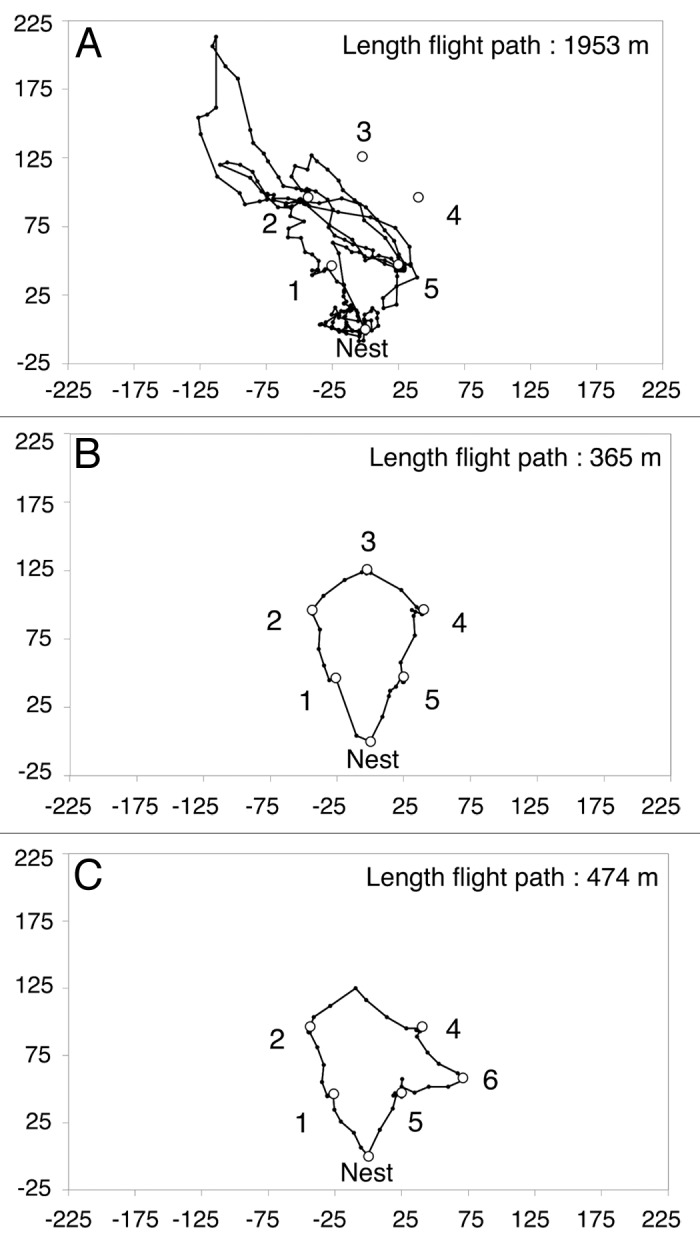
Figure 3. Radar tracks of bumblebees (Bombus terrestris) visiting artificial flowers arranged in a pentagon in the field. Black dots show the position of bees at 3 sec intervals as recorded by the radar. White circles indicate the locations of the artificial flowers (1–6) and the nest-box (Nest). Distances are in meters. (A) Flight path of a naïve bee during its first foraging bout in an array of five flowers (1–5) arranged in a regular pentagon. This initial path is long, doesn’t link all flowers and returns several times at the same (empty) flowers. (B) Flight path of an experienced bee during its 28th foraging bout in the same array as in A. The route was very close to the optimal path to visit all flowers once (312 min). (C) Flight path of an experienced bee during its 8th foraging bout after a familiar flower (flower 3) has been removed and a new flower (flower 6) has been introduced. The bee has discovered the new flower and integrated it into a new optimal sequence, although still visiting the location with the missing flower. Images modified from.18
